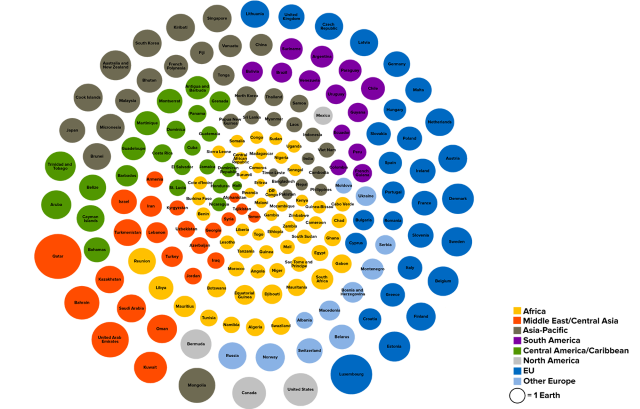
Earth Overshoot Day is Approaching
17th Aug 2020
Earth Overshoot Day is the date when human demand and use of ecological resources exceeds what earth can regenerate in that year. It is a date that the Global Footprint Network calculates as the number of days earth's biocapacity can provide for humanity's ecological footprint. And it is a date which is earlier each year. This year, Earth Overshoot Day lands on August 22 - in five days' time.

The History of Earth Overshoot Day
Earth Overshoot Day was first campaigned in 2006. Since then, we have increased our ecological debt. The first Earth Overshoot Day campaign was in 2006. At that time, Earth Overshoot Day fell in October. In 14 years, we have increased our ecological deficit by two months. That is one-sixth of a year.
How is Earth Overshoot Day Calculated?
By comparing the earth's biocapacity with our ecological footprint, Global Footprint Network calculates Earth Overshoot Day each year. Earth Overshoot Day is determined by dividing the earth's biocapacity by humanity's ecological footprint, then multiplying that by 365, the number of days in a year. Just like measuring supply and demand of a certain product, Global Footprint Network measures a population's demand for and ecosystem's supply of resources and services. On the supply side, a city or nation's biocapacity represents its biologically productive land and sea area, including forest lands, grazing lands, cropland, fishing grounds, and developed land. On the demand side, the ecological footprint measures a population's demand for plant-based food and fibre products, livestock and fish products, timber and other forest products, space for urban infrastructure, and forest to absorb CO2 emissions. Both supply and demand are measured in global hectares. A city, state, or nation's ecological footprint can be measured against their biocapacity – and if their demand exceeds the supply, they run into ecological debt. They can meet their demand, in this case, by importing products they cannot produce themselves. However, at the global level, ecological debt and overshoot are the same. There is no net import of resources to the planet.
This Year
How many earths would we need if the whole world lived like one country? This year, Global Footprint Network reported a 9.3% reduction in the global ecological footprint compared to the same period last year. However, this is not because our use of ecological resources is improving. The main drivers were the carbon footprint (reduced 14.5% from 2019, due to the reduction in emissions due to the pandemic) and the forest product footprint (reduced 8.4% from 2019 due to economic slowdown caused by COVID-19). Read the report here. We can expect that, next year, if the pandemic ends and the world returns to normal, we will see a vast increase in both carbon emissions and forest product demand.

The Answer
What is the answer? We certainly don't have one that will put our Earth Overshoot Day back to December 31. We are strong advocates of a circular economy – turning used material back into the earth to create new material. This would reduce our consumption of ecological resources and hopefully reduce our ecological debt. But it will take the whole world working together – something that we need to start working on right now.
Information taken from Earth Overshoot Day.org. Read about PLA bioplastic and our composting service, on our blog.
Planet Friendly Packaging acknowledges the traditional custodians of the land on which we work. Our thoughts go out to everyone affected by COVID-19. Stay safe.

